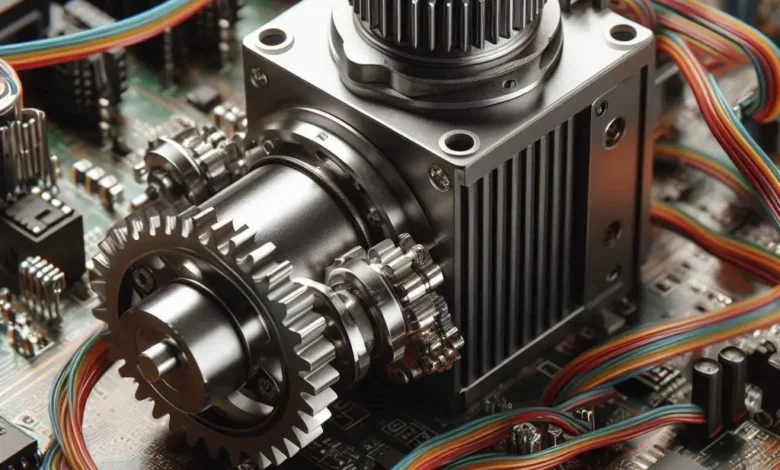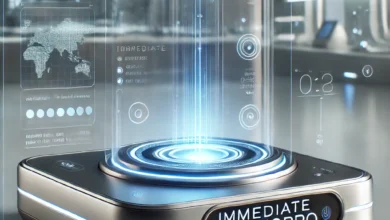Does AVC Need a Digital Servo?

In radio-controlled (RC) vehicles, understanding how technology impacts performance is critical. One common question that often arises is, “Does AVC need a digital servo?” The answer can significantly affect the driving experience of an RC hobbyist, as both AVC (Active Vehicle Control) and servos are vital components in modern RC systems. In this article, we will explore how AVC technology interacts with analog and digital servos, whether upgrading to a digital servo is necessary, and what other components of your RC system can enhance overall performance.
What is AVC (Active Vehicle Control)?
AVC is a stabilization technology developed by Spektrum, primarily used in RC vehicles to enhance their control and driving experience. It works like a vehicle’s stability control system, keeping your RC car or truck stable and easier to handle. With AVC, sensors detect changes in the vehicle’s orientation and make micro-adjustments to steering, throttle, and braking. The system helps maintain better traction, even in challenging terrains, by minimizing wheel spin or drifting.
The integration of AVC is incredibly valuable, especially for RC hobbyists who enjoy high-speed racing or navigating tricky terrain. While the technology is impressive, one often wonders if AVC requires a digital servo for optimal performance or if an analog servo can suffice.
What is a Servo, and How Does it Relate to AVC?
An analog or digital servo controls a specific part of the RC vehicle—typically steering, throttle, or any moving parts requiring precision. The servo operates by receiving signals from the transmitter (the controller) and converting those signals into mechanical movement.
- Analog Servo: This is the traditional type of servo, which operates by receiving pulses from the receiver. However, the pulse rate of an analog servo is slower, usually around 50 pulses per second, which can result in slower response times.
- Digital Servo: A digital servo operates similarly to an analog one, but it processes signals much faster, often up to 300 pulses per second. The quicker response allows for more precise and immediate control over the vehicle’s movements.
Does AVC Work Better with a Digital Servo?
This is where the discussion about the necessity of digital servos becomes crucial. AVC requires fast, accurate adjustments to the vehicle’s steering and throttle to work correctly. In this regard, a digital servo could offer superior performance because it responds more quickly and accurately to changes.
AVC systems rely on feedback and corrections to maintain stability. Since digital servos can process signals more frequently than analog servos, they are better suited to handle the quick adjustments that AVC requires. As a result, you may experience smoother control and better stability with a digital servo than with an analog one.
However, AVC does not necessarily require a digital servo to function. If you’re not pushing your vehicle to extreme limits (such as in competitive racing or high-speed off-roading), an analog servo may still work well, but you might not benefit from the AVC system’s advanced features.
Benefits of Using a Digital Servo with AVC
- Increased Precision: Digital servos offer more precise control, especially during high-speed maneuvers. This increased precision helps the AVC system make minute adjustments faster than an analog servo could.
- Faster Response Time: The higher pulse rate of a digital servo means it can respond faster to changes in the vehicle’s speed or direction, which is essential for AVC to correct and maintain vehicle stability.
- Smoother Driving Experience: Since digital servos provide quicker feedback, you’ll notice a smoother and more predictable driving experience, especially when driving on rugged terrain.
- Higher Torque: Digital servos often have higher torque than their analog counterparts, meaning they can move heavier loads or provide more muscular steering control. This is particularly important in larger or more powerful RC vehicles.
Drawbacks of Using an Analog Servo with AVC
- Slower Response Time: Analog servos do not have the same pulse rate as digital servos, meaning their response time is slower. This could lead to delayed or inaccurate corrections by the AVC system, especially during high-speed or complex maneuvers.
- Limited Precision: Analog servos are less precise, and while this might not be noticeable at lower speeds, it becomes more apparent when pushing your vehicle to higher limits. The AVC system may struggle to maintain stability as effectively as an analog servo.
When Can an Analog Servo Be Acceptable?
An analog servo can suit your needs if you’re a beginner or using your RC vehicle casually. AVC can still provide assistance and stability, but it won’t be able to make as quick or precise adjustments as it would with a digital servo.
Other Factors That Influence AVC Performance
While the servo type plays a significant role, other factors can also affect how well AVC performs. Here are some additional components and settings to consider:
- Receiver Compatibility: Make sure your RC system’s receiver is compatible with the AVC system and your chosen servo, analog or digital. The receiver is responsible for processing the signals from the transmitter and directing the servo.
- Battery Power: A higher-capacity battery can help your RC system, including the AVC and servo, perform more efficiently. Insufficient battery power may reduce the effectiveness of both.
- Vehicle Setup: AVC performance can also affect your vehicle’s overall setup, including tires, weight distribution, and suspension. Ensuring these are optimized will enhance the overall driving experience.
- Terrain: AVC works best on challenging terrains, where stability control is most needed. If you’re driving on smooth, flat surfaces, the benefits of AVC, even with a digital servo, may not be as noticeable.
AVC vs. Other Stabilization Systems
It’s important to note that AVC is not the only stabilization system available for RC vehicles. Other brands have developed versions of stability control, each with varying degrees of effectiveness depending on the components involved, including the servo type.
- Traxxas TSM (Traxxas Stability Management): Traxxas has its version of AVC, known as TSM, which also benefits from using digital servos for better control. Like AVC, TSM offers real-time adjustments to keep the vehicle stable.
- Gyro Stabilizers: Some RC enthusiasts opt for standalone gyro stabilizers, which work similarly to AVC by making real-time adjustments to the steering. These systems, too, often perform better with a digital servo.
How to Choose the Right Servo for Your Setup
Now that you understand the benefits of digital servos for AVC, you might wonder which suits your specific setup. Here are a few factors to consider when choosing a servo:
- Budget: Digital servos are generally more expensive than analog ones. If you’re on a tight budget and don’t need the precision a digital servo offers, an analog servo can still work, especially for casual driving.
- Type of Driving: An analog servo might be sufficient if you primarily drive on smooth surfaces or at moderate speeds. However, a digital servo will provide better control if you participate in high-speed racing or drive on rough terrain.
- Vehicle Size and Weight: Larger, heavier vehicles will benefit more from the higher torque of a digital servo. Lighter vehicles can get by with an analog servo, but performance will still improve with a digital one.
- Servo Specifications: Always check the servo’s torque, speed, and power consumption. An excellent digital servo will have higher torque and faster speeds, making it ideal for AVC systems.
Final Thoughts
So, does AVC need a digital servo? While AVC can technically work with analog and digital servos, the performance improvement offered by digital servos is undeniable. Investing in a digital servo is a wise choice to get the most out of your RC vehicle’s AVC system, especially in high-speed or competitive scenarios. However, an analog servo can still provide satisfactory performance for casual driving.
Frequently Asked Questions
Q1: Can AVC function without a servo at all?
AVC requires a servo to control the vehicle’s steering and throttle. Without a servo, the system has no mechanism to make the necessary adjustments.
Q2: Do I need to upgrade my analog servo to digital immediately?
Not necessarily. If you’re happy with your vehicle’s current performance and only drive casually, an analog servo can suffice. However, a digital servo is worth the upgrade if you seek improved precision and control.
Q3: Can I use any digital servo with AVC?
As long as the digital servo is compatible with your receiver and vehicle, you can use it with AVC. Always check specifications before purchasing.



